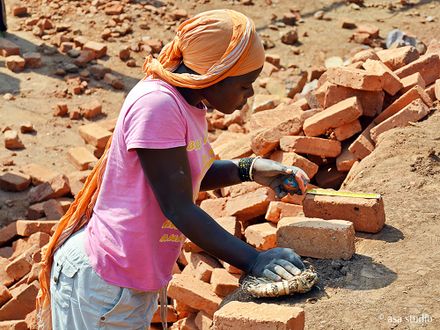
Pre-primary School
DESIGN TEAM
Zeno Riondato, Michelle Stadelman, Francesco Stassi, Alice Tasca
YEAR
2013
LOCATION
Rwanda
CATEGORY
Educational Architecture, Schools
Text description provided by architect.
The project aim is to set the Rwandan standards for preprimary facilities. Based on the findings from the Child Friendly Schools standards, this project seeks to stimulate kids under 6.
Considered as an added educator, the design is thought to engage the kids self-learning and stimulation. The use of materials and techniques, the participatory process of design and construction, and the compound arrangement, seek to achieve a sustainable, innovative, cost efficient and replicable model.
SUSTAINABILITY CONCEPT
Gasanze preprimary school is one of 5 pilot projects that aim to improve early childhood education at a national level. The Government of Rwanda’s wants to set the standards for preprimary facilities having the model replicated at every primary school countrywide; therefore cost efficiency and community involvement are key of success.
The design should achieve sustainable, creative and comfortable learning spaces for children under the age of 6.
The project uses local materials introducing small innovations to the traditional construction methods for structurally sound and stimulating facilities that transfer skills to the community.

The design can be easily understood and its techniques can be applied elsewhere to improve the built environment. Working with 5 different rural communities is unveiling questions related role of architecture in the Rwandan kids’ stimulation as well as aesthetic and spatial considerations.
All elements are designed to engage the children’s gross motor, language skills, social interaction and knowledge toilets; outdoors covered learning spaces that allow for flexible uses year round; different materials, patterns, textures, shapes and colors; interior organization of the classrooms with several different storage spaces and different corners.

All these elements position the facility as an added educator, helping caregivers in their job and fostering the child’s self-learning process.
The use local materials reduce the environmental impact, and allow for unskilled labor to learn and grow with the building.
The RC load bearing structure ensures safety against hazards meanwhile the use of fired brick masonry elevations fit with the village fabric.
The interior reed ceiling gives aesthetic value to the space improving the acoustic and climatic comfort while the roof skylight allows for enough daylight.
UNICEF’s role involving local authorities, defining an innovative teaching strategy, providing for logistics and funding, and liaising with the Ministry of Education has been crucial.
The participation of all stakeholders is a central piece of the design process, which began with the findings from the CFS consultation project carried out by UNICEF 2008 across country; ASA has been working with headmasters, UNICEF, engineers, contractors, and community masons to ensure the long-term durability of these facilities.


















